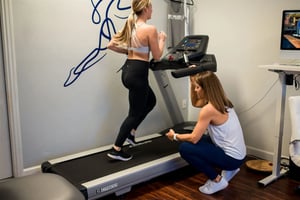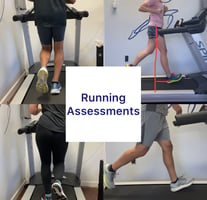Running is more than a sport; it’s a passion. For dedicated runners, ensuring every stride is...
Running Pain Free
Pain-free running
Is pain-free running possible? Pushing yourself while running will certainly hurt but it doesn’t mean you have to add the extra pain of an injury! But did you know that 80% of runners get injured requiring time off from training?
It’s easy to get distracted by some common injury myths out there:
"I need new shoes and my injury will get better"
"I didn’t stretch enough which is why I got hurt"
"I land on my heel which is a death sentence for runners" or even
"I shouldn't run because it is bad for my knees!"
Did you know that most running injuries are the result of training errors. This simply means too much too soon, aka overload injuries. Every tissue in your body has a certain ceiling for its ability to take load. And at a certain point they become overloaded beyond the point of adaptation. Training load and volume should always stay just below the point of the tissue ceiling and as the tissue adapts and the ceiling increases you can increase the training at the same rate.
Some of these changes in training can be a change in weekly mileage, adding in speed work, adding in hill work, a sudden change in environment or terrain or a drastic change in shoe type.
Strangely enough, load OUTSIDE of your training can also have an impact on your injury risk. A new pair of work shoes, a change from sitting to a standing desk, having to walk more are all examples of indirect training changes.
You also have to consider lifestyle factors that reduce your body’s load capacity.
Poor sleep, stress, bad nutrition, poor hydration and a night of drinking for example will all reduce your tissue capacity for training. Over-time this reduced capacity can make you susceptible to an injury.
Just remember that all changes need to be gradual and progressive.
So what can you do?
Strength training is one of the most easy and effective ways to increase your tissue capacity!
By strengthening your body you are adding extra layers of protection to every tissue. That includes cartilage, ligaments, tendons, bones and muscle.
Certain tissues get stronger in different ways. Bones respond really well to short durations of a lot of load. Such as heavy, slow resistance training or plyometric activities like ladder drills and box jumps.
Tendons respond really well to tensile load and get stronger and reorganize with heavy slow resistance training and eccentric exercises. Eccentric exercises are where the muscle has to lengthen while under load and contracting. Think lowering the weight down slowly on a dead lift!
Here are some tips to help keep you running pain-free:
1.
Warm-up properly! Start with a good walk for 10 minutes, Then spend about 5 minutes doing a dynamic warm-up such as this one. The goal of the warm up is to get the blood flowing to your arms and legs and to stretch out any tissue that has stiffened up. A good warm up is also important to desensitize muscle or tendon injuries.
2.
Strength training! Strength training is a great way to increase the load tolerance of your tissues making them more resilient and less prone to injury. Corrective exercises are a great way to strengthen but also address any biomechanical faults you might have.
3.
Running mechanics: gait analysis results and terms like over-pronation and hip drop can produce a lot of anxiety in runners. But have no fear, your running mechanics might only have a small impact on your risk for injury. There are certain injuries closely associated with findings on a gait analysis but changing your gait for the sake of “reducing your risk for injury” is not supported by the literature. I do think every runner should have a run screen and know what their mechanics look like and where their mechanics might be lacking and possibly contributing to an injury.
4.
Find the right fit for your shoe. Now if you have a great pair of shoes and you have had a consistent style that you have worn over the years then you should be good. The number 1 thing to do when buying a pair is to go for comfort! Even the latest style or the newest super shoe can be the wrong shoe for you. In my opinion and what has worked for me and my clients over the years is that the less shoe the better. Now this is most people, most of the time and not everybody. But I always edge towards the wide toe box shoe and a 0-4mm drop. No don't go out and switch from a 12mm drop to a 0 or you will be in a world of hurt! But that is what we do here at Core Values PT. We assess the WHOLE runner, including your feet, so we can make the best recommendations for YOU!
-
- Check out my previous blog on finding the right fit!
So where do we go with this? We treat the individual. Everyone is different and one’s needs will continue to change with time and life factors. But always go back to the basics, your training and your biomechanics. And when we are hurt, resting is not the answer. Get in to see a specialist quickly so you can speed up recovery time and address the underlying cause of your injury.
-Dr. Rebecca Smith, PT, DPT, Cert-DN
Want to talk more about this? Schedule a call with Core Values today



